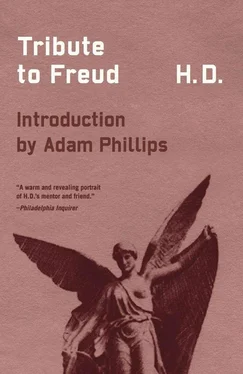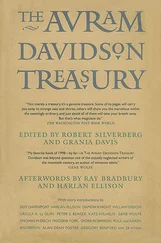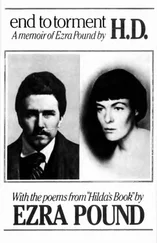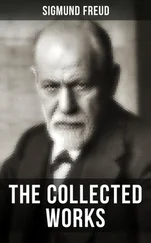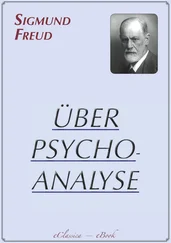Mother? Father? We have met one of them in the garden of the house on Church Street and we have seen the other further down Church Street, where the pavement makes a generous curve under the church on to the shops. But we are not shopping. We are not calling on anyone, friend or near-friend or near or distant relative. Everyone knows our mother so we are never sure who is related and who is not — well, in a sense everyone is related for there is the church and we all belong together in some very special way, because of our candle service on Christmas Eve which is not like what anyone else has anywhere, except in some places in Europe perhaps. Europe is far away and is a place where our parents went on their honeymoon. It is she who matters for she is laughing, not so much at us as with or over us and around us. She has bound music folios and loose sheets on the top of our piano. About her, there is no question. The trouble is, she knows so many people and they come and interrupt. And besides that, she likes my brother better. If I stay with my brother, become part almost of my brother, perhaps I can get nearer to her.
But one can never get near enough, or if one gets near, it is because one has measles or scarlet fever. If one could stay near her always, there would be no break in consciousness — but half a loaf is better than no bread and there are things, not altogether negligible,
to be said for him. He has some mysterious habits, this going out at night and sleeping on the couch in his study by day. As far as that goes, there is his study. Provided you do not speak to him when he is sitting at his table, or disturb him when he is lying down, you are free to come and go. It is a quiet place. No one interferes or interrupts. His shelves are full of books, the room is lined with books. There is the skull on the top of the highest bookcase and the white owl under a bell-jar. He has more books even than our grandfather and he has that triangle paper-weight that shows the things in the room repeated and in various dimensions. This, of course, I have not at the time actually put into words, hardly put into thoughts. But here I am, in some special way privileged. It is his daughter to whom he later entrusts the paper-knife; he leaves his uncut magazines and periodicals for her. She knows how to run the paper-knife carefully along under the surface of the double page, and this is especially important as her older brother is not invited to cut the pages. He has, of course, many other things to do. Our mother is a mixture of early Pennsylvania settlers, people from this island, England, and others from middle Europe — he is one thing. He is New England, though he does not live there and was not born there. He comes from those Puritan fathers who wear high peaked hats in the Thanksgiving numbers of magazines. They fought with Indians and burned witches. Their hats were like the hats the doctors wore, in the only picture that was hanging in his study. The original picture was by Rembrandt, if I am not mistaken. The half-naked man on the table was dead so it did not hurt him when the doctors sliced his arm with a knife or a pair of scissors. Is the picture called A Lesson in Anatomy?
It does not really matter what the picture is called. It is about doctors. There is a doctor seated at the back of the couch on which I am lying. He is a very famous doctor. He is called Sigmund Freud.
We travel far in thought, in imagination or in the realm of memory. Events happened as they happened, not all of them, of course, but here and there a memory or a fragment of a dream-picture is actual, is real, is like a work of art or is a work of art. I have spoken of the two scenes with my brother as remaining set apart, like transparencies in a dark room, set before lighted candles. Those memories, visions, dreams, reveries — or what you will — are different. Their texture is different, the effect they have on mind and body is different. They are healing. They are real. They are as real in their dimension of length, breadth, thickness, as any of the bronze or marble or pottery or clay objects that fill the cases around the walls, that are set in elegant precision in a wide arc on the Professor’s table in the other room. But we cannot prove that they are real. We can discriminate as a connoisseur (as the Professor does with his priceless collection here) between the false and the true; a good copy of a rare object is not without value, but we must distinguish between a faithful copy and a spurious imitation; there are certain alloys too that may corrode and corrupt in time, and objects so blighted must be segregated or scrapped; there are priceless broken fragments that are meaningless until we find the other broken bits to match them.
There are trivial, confused dreams and there are real dreams. The trivial dream bears the same relationship to the real as a column of gutter-press news-print to a folio page of a play of Shakespeare. The dreams are as varied as are the books we read, the pictures we look at, or the people we meet. “O dreams — we know where you Freudians think your dreams come from!” Your young men shall see visions, and your old men shall dream dreams. A great many of them come from the same source as the script or Scripture, the Holy Writ or Word. And there too we read of Joseph, how his brethren scoffed, Behold this dreamer cometh.
With the Professor, I discussed a few real dreams, some intermediate dreams that contained real imagery or whose “hieroglyph” linked with authentic images, and some quaint, trivial, mocking dreams that danced, as it were, like masquerading sweeps and May queens round the Maypole. But the most luminous, the most clearly defined of all the dream-content while I was with the Professor was the dream of the Princess, as we called her.
She was a dark lady. She wore a clear-colored robe, yellow or faint-orange. It was wrapped round her as in one piece, like a sari worn as only a high-caste Indian lady could wear it. But she is not Indian, she is Egyptian. She appears at the top of a long staircase; marble steps lead down to a river. She wears no ornament, no circlet or scepter shows her rank, but anyone would know this is a Princess. Down, down the steps she comes. She will not turn back, she will not stop, she will not alter the slow rhythm of her pace. She has nothing in her arms, there is no one with her; there is no extraneous object with her or about her or about the carved steps to denote any symbolic detail or side issue involved. There is no detail. The steps are geometrical, symmetrical and she is as abstract as a lady could be, yet she is a real entity, a real person. I, the dreamer, wait at the foot of the steps. I have no idea who I am or how I got there. There is no before or after, it is a perfect moment in time or out of time. I am concerned about something, however. I wait below the lowest step. There, in the water beside me, is a shallow basket or ark or box or boat. There is, of course, a baby nested in it. The Princess must find the baby. I know that she will find this child. I know that the baby will be protected and sheltered by her and that is all that matters.
We have all seen this picture. I pored over this picture as a child, before I could read, in our illustrated Doré Bible. But the black and white Doré illustration has nothing in common with this, except the subject. The name of this picture is Moses in the Bulrushes and the Professor of course knows that. The Professor and I discuss this picture. He asks if it is I, the dreamer, who am the baby in the reed basket? I don’t think I am. Do I remember if the picture as I knew it as a child had any other figure? I can’t remember. The Professor thinks there is the child Miriam, half concealed in the rushes; do I remember? I half remember. Am I, perhaps, the child Miriam? Or am I, after all, in my fantasy, the baby? Do I wish myself, in the deepest unconscious or subconscious layers of my being, to be the founder of a new religion?
Читать дальше
